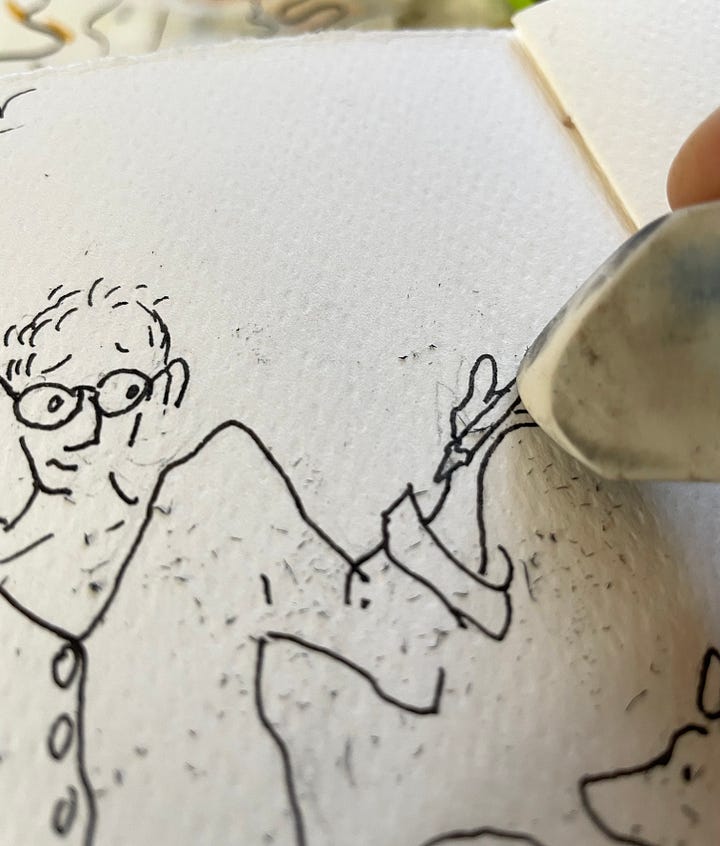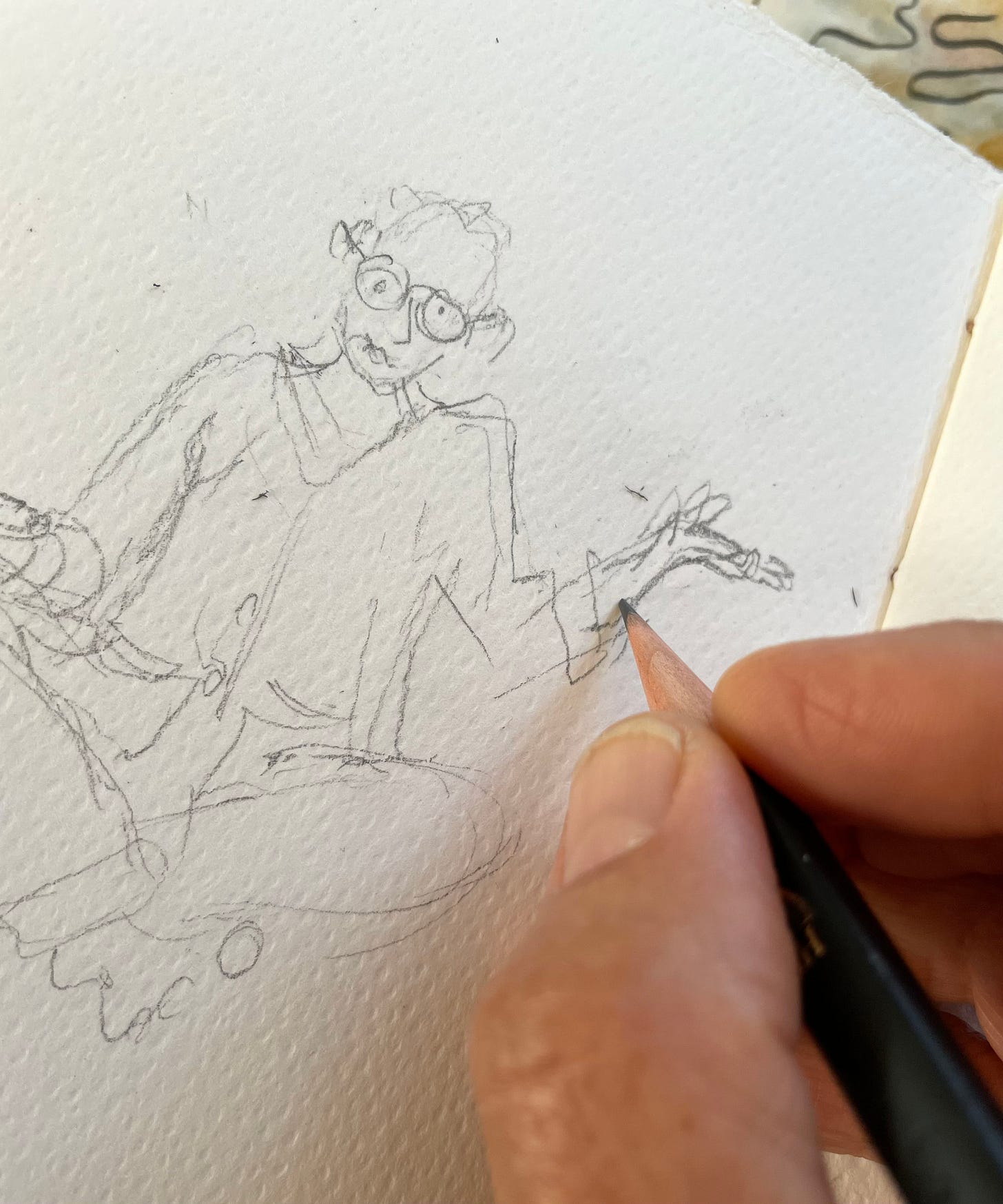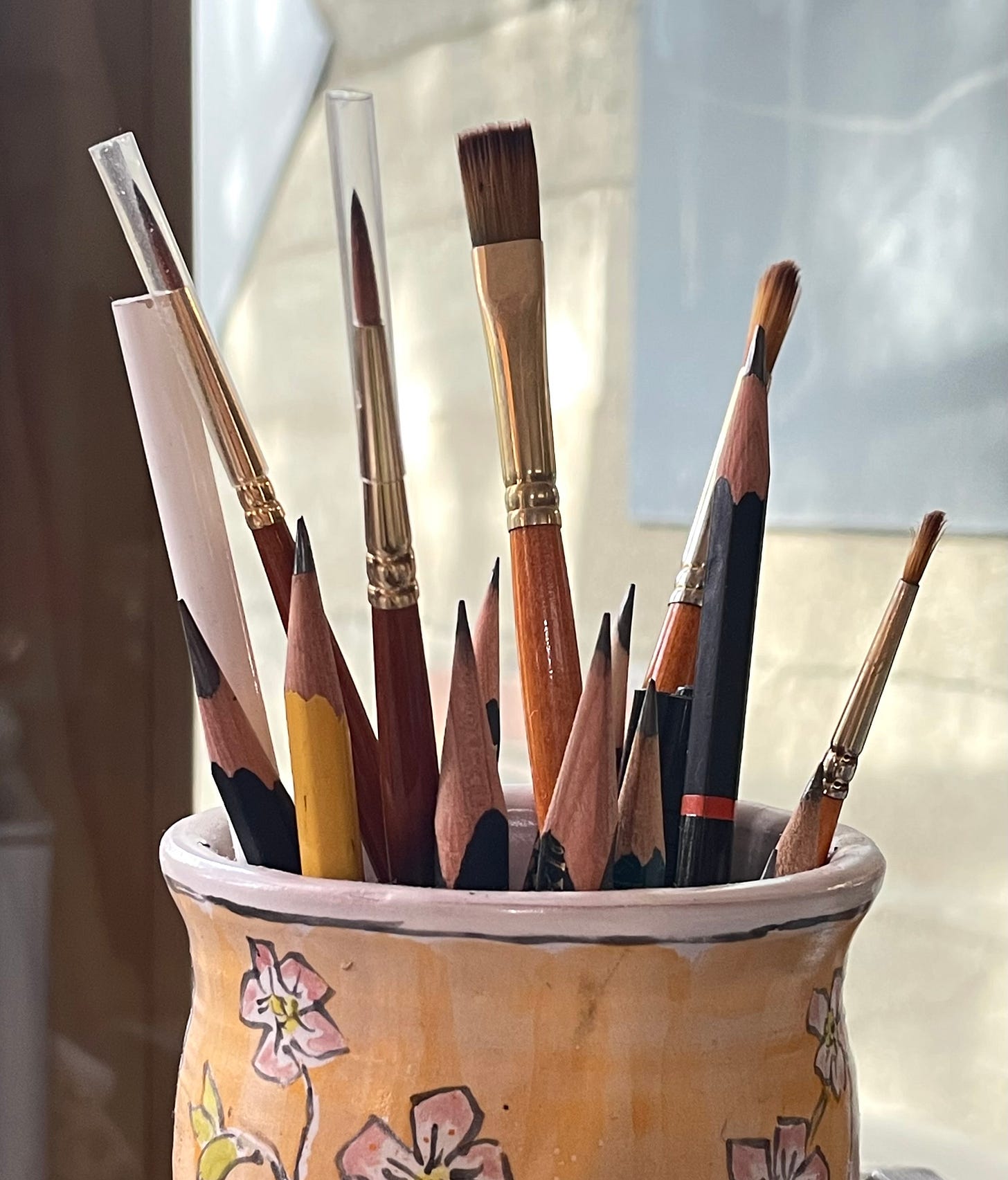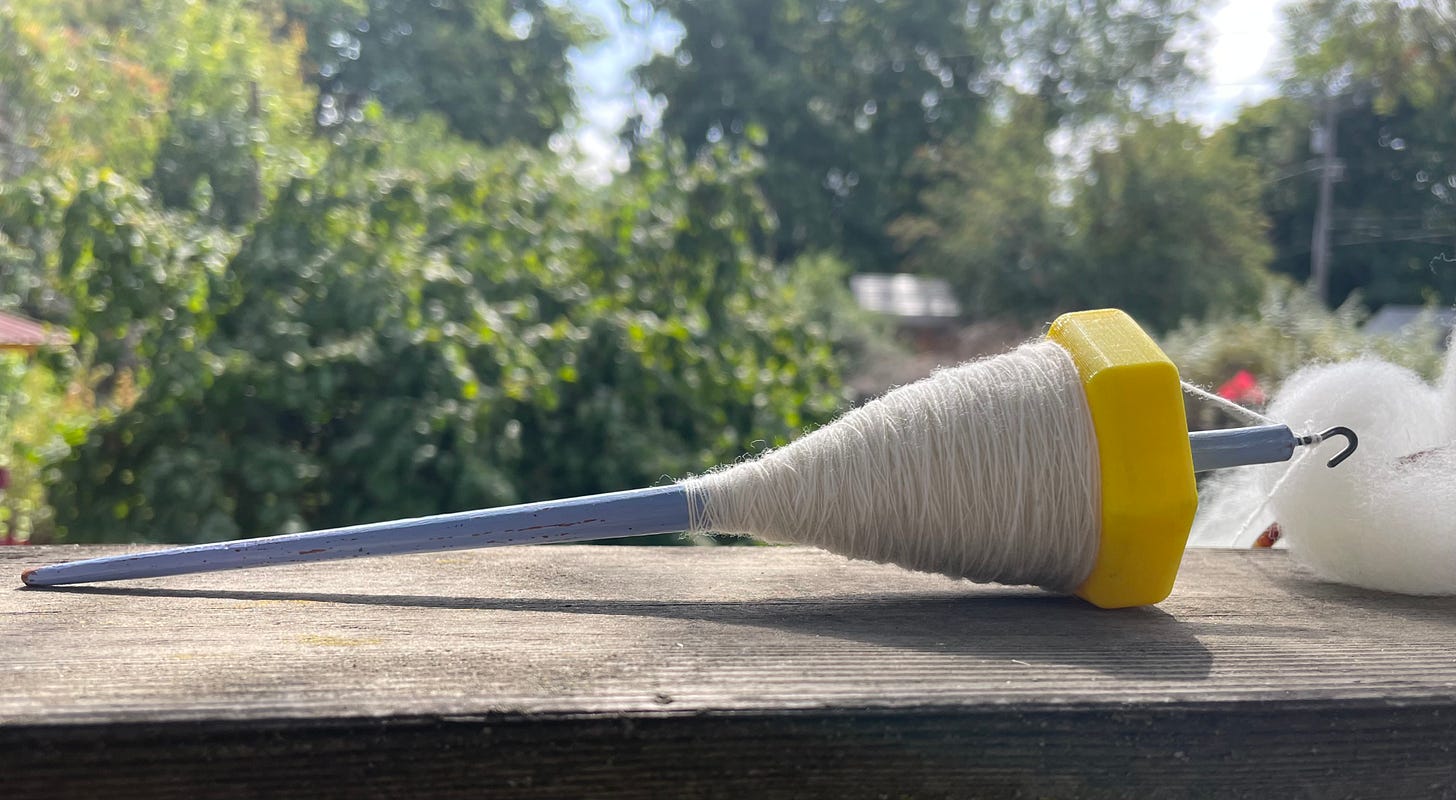How do retired pencils fill their days?
Do they fret over ancient moments of hovering uncertainty?
Or do they revel in the lines they ultimately drew?
Are any of them annoyed that the marks to which they gave their all (so essential in the moment), have been erased? Or is acceptance the general order of the day?
Perhaps they have achieved enlightenment and don’t care either way.


But what about past book/pencil relationships?
Have they been cooperative, combative, indifferent? All of that and more?
How can they not be interesting, what with one always pouring out their guts and the other endlessly receiving the lines and shapes whether they like ‘em or not.
But maybe it is more reciprocal and symbiotic, everyone valued for doing the thing they’re best at.
There is a good chance it depends on the nature of each.
Some paper certainly does all it can to resist pencil marks of any sort. And I definitely know a few pencils who make sure they are never forgotten— embedding themselves so deeply into the paper fibers they never come out. But not all are like that.
Personally I’m in favor of an easygoing pencil/paper relationship, but imagine others might prefer something a little more (or less) dramatic. It’s hard to predict though, and I wonder if the pencils resent being type-cast or inadvertently mis-used when I get it wrong.
Clumped together as they are in their sweet little stoneware jar, I imagine the retired ones reminiscing about such things: “yes yes, and then there was that other drawing—the lines so crisp and perfect they were too strong to be erased—they’ll never forget that one. And remember that time back in ‘05 when I had to take field notes on wet paper in the rain?”
It also seems natural to me that some might feel set aside (anxiously saying that every inch of graphite is important and they have drawings in them yet), while others are perfectly happy to to turn over the work to those who are long and sharp.
And what about them, those pencils still in action? Are they confident or do they fret about what they have to offer—worry they will have nothing to say when their turn comes to be plucked from the jar?
Do they madly prepare internally? Or like many of us, do they rely on training, cross their proverbial fingers, and trust that the ideas will flow onto the blank page (or screen) at the appropriate moment?1
Having a specific skill to share definitely helps with this trust, though I just learned the other day, that old rhyme actually goes: A jack of all trades is a master of none, but often times better than a master of one, and that fills me with glee— for while I’m deeply fond of all my sticks, I have to admit to a serious soft spot for those without a singular purpose. (Perhaps because I enjoy working in many different ways myself?)
To be sure, some of the dowels are decorated with evidence of past glory: days of opening sheds or keeping track of long continuous warps. And while they could certainly do those things again, there is not need to be limited by them, so I very much hope that they value their versatility as much as I do.
To that end I also worry about the hand full of shin shi2 on the left side of the photo above. Purpose built as they are with those needle-sharp ends, they have languished in the stick bouquet for years.
But what do I know? Maybe they like it here. Or have ideas of their own. Certainly the batten bequeathed to me by a dear friend has suggested some interesting uses. And that beaver-gnawed stick, while exuding evidence of past industry, is nice to merely to gaze upon—as restful as a smoothly peeled willow wand—and it may well know this for it is always at the front where I can see it.
Random rulers and paint-crusted brushes are relatively versatile, though in practice the split tongue depressors and cherry-stained Popsicle sticks lead more active lives.
But as I said the other day, you really never know what is going to happen. After languishing in the wooden spoon jar for years, the spurtle3 in the drawing below now has steady work keeping my porridge from scorching—a fine thing for us both.
Now while I understand that the emotional life of random sticks might not of paramount importance to everyone —
—I firmly believe that the right stick at the right moment is a priceless treasure.
Picking it up can release a person from all kinds of hovering uncertainty, and actually holding such a stick can help move us from that uncertain state of being about to do a thing—
— to actually doing it.4
And for that I am ever grateful.
Thanks sticks, for your patience and your help.
Remember to comment (stick stories anyone?) with the button above rather than by hitting reply for if you choose the latter I won’t see your lovely words. Thanks.
The Live YouTube . Golly! Amazing. And what fun it was to have all of you there even though I couldn’t see any of the comments from my end (thank goodness or I’d have been even more distracted for trying to answer all the questions at once—howRebecca managed to read comments and keep the thing going and impart tapestry wisdom at the same time is beyond me). A million thanks to all of you who have watched — and a brief heads up to those of you who might want some day to take the Fringeless class, cuz shhhh — there is a secret discount code at the end.
Shinshi: Japanese bamboo sticks used to stretch fabric, somewhat like a temple in weaving, are ages old traditional stretching equipment in Japan. They are most commonly used to stretch fabric from selvage to selvage, but may also be used diagonally to stretch smaller rectangles of fabric, such as a furoshiki. (direct quote from John Marshall’s linked website).
For all of you who watched the Youtube Video, want to try The Fringeless Class but don’t want to make a loom or jig, Rebecca just sent me this fabulous information.
My favorite tapestry fork maker, Becki Dowd of Magpie Woodworks saw our chat last week and I asked her about making PVC jigs. She was already making the tall pipe looms so she has made a kit with loom and jig which seems like a solid buy to me.
https://magpiewoodworks.com/collections/looms-1/products/fringeless-loom-and-jig-kit


















I'm ever so grateful to you for sharing "the rest of the story" with the quote about "Jack of all trades." That was often derisively hurled at me by a violin teacher during my formative years. But, now I've reached that magical age of "adulthood" (I got here around age 52), and having found my true artistic niche, I'm learning that the second half of the quote proves true more often than not. As usual, a beautiful read here. Thank you!
Thanks so fun! I love my sticks and geriatric pencils also!